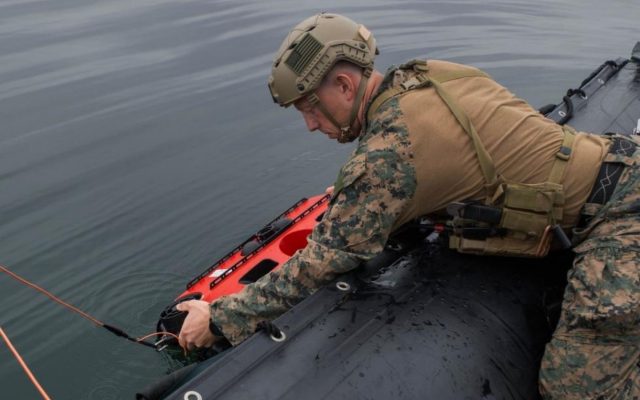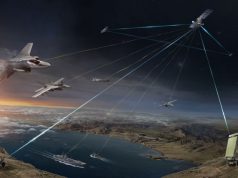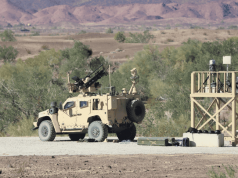
The US Marine Corps Systems Command began fielding an amphibious, unmanned robot system for littoral operations in September this year.
The explosive ordnance disposal remotely operated vehicle is a next-generation, box-shaped robot that enables marines to navigate safely and efficiently in shallow waters to identify and neutralize explosive hazards and other threats.
“This robot gives marines eyes in the water,” said Master Sgt. Patrick Hilty, an explosive ordnance disposal project officer at MCSC. “It is a capability the Marine Corps has never before had.”
The ROV employs sound navigation and ranging sensors, a high-definition video capability and cameras that provide real-time feedback for EOD divers. It includes an articulator arm that helps Marines maneuver through underwater foliage or neutralize explosive threats.
“It is a system that saves Marine divers from having to swim hundreds of meters, an activity that can tire them out,” said Hilty.
Marines can use the robot for various amphibious missions. For example, they can leverage the ROV to search harbors before docking a Marine Expeditionary Unit ship. Operators can use it for activities in very shallow waters, conducting littoral lost object searches, damage assessments and mine countermeasure missions.
Hilty applauded the ROV’s tether feature, which keeps EOD technicians at a safe distance from explosive hazards. Before the capability, marine divers could only disrupt or dispose underwater explosive threats by swimming in close proximity, exposing them to hostile elements.
“The ROV gives us a remote means to search underwater while also helping us stay at our best when having to prosecute explosive devices,” said Hilty.
The ROV also supports naval integration. In 2019, the Navy acquired this commercial off-the-shelf capability. The service conducted a series of tests to determine its viability for EOD missions. These tests included reliability and maintenance evaluations to test its effectiveness and ease of employment during simulated activities.
“Testing conducted by the Navy allowed us to field this capability to Marines more quickly,” said Hilty. “Additionally, the Marine Corps and Navy both having this system increases interoperability among the services.”
The robot is the first increment in the littoral explosive ordnance neutralization (LEON) family of systems. This series of robotic capabilities will allow marines to search a wider area in the littorals, including the very shallow water, surf and beach zones.
LEON systems, to be fielded gradually by MCSC over the next several years, will also help the Marine Corps complement Navy EOD teams in joint operations as it strives to evolve naval force integration in the future.
“Having this capability aids in naval force integration by giving us the same equipment that the Navy is using,” said Staff Sgt. Seth Barnes, EOD Technician with 1st EOD Company. “It allows us to bolt on with Navy EOD as we move forward.”
Achieving Force Design 2030 remains an ongoing, concerted effort for the Marine Corps, as repeatedly stated by Commandant of the Marine Corps Gen. David Berger. This goal requires the acquisition of next-generation, unmanned systems, like the ROV, to support expeditionary advanced base operations.
Hilty said the Marine Corps has never before leveraged waters for missions. In the past, Marines would begin operations from land, typically a beach. This new concept requires a shift in the paradigm in how the Marine Corps operates.
“We’ve always done this piece via the Navy,” said Hilty. “Now that the Marine Corps is doing it, we are learning valuable skillsets, becoming much better-rounded and proving to be a bigger asset to the marine air-ground task force.”


























